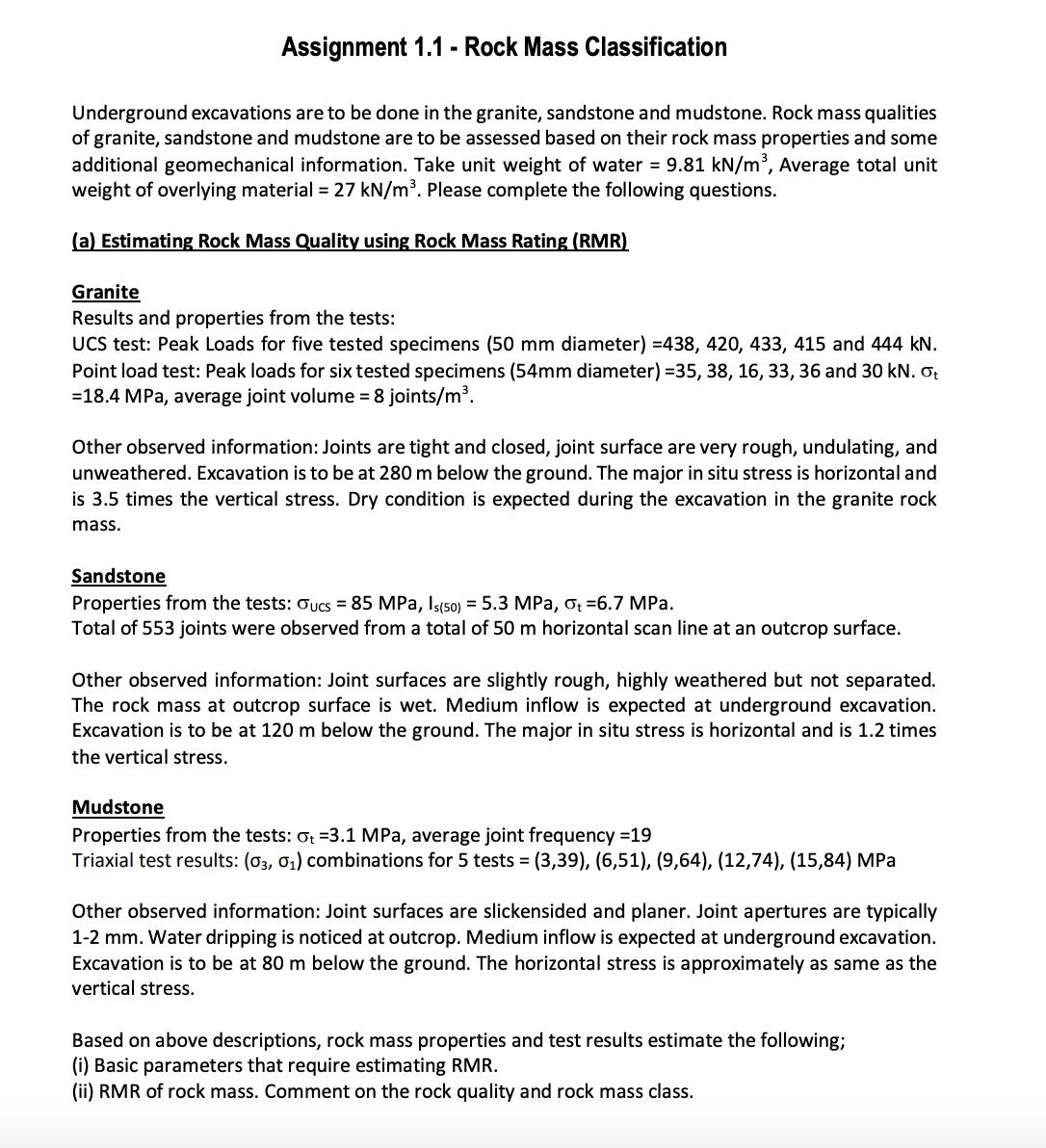Answered step by step
Verified Expert Solution
Question
1 Approved Answer
Assignment 1.1 - Rock Mass Classification Underground excavations are to be done in the granite, sandstone and mudstone. Rock mass qualities of granite, sandstone

Assignment 1.1 - Rock Mass Classification Underground excavations are to be done in the granite, sandstone and mudstone. Rock mass qualities of granite, sandstone and mudstone are to be assessed based on their rock mass properties and some additional geomechanical information. Take unit weight of water = 9.81 kN/m, Average total unit weight of overlying material = 27 kN/m. Please complete the following questions. (a) Estimating Rock Mass Quality using Rock Mass Rating (RMR) Granite Results and properties from the tests: UCS test: Peak Loads for five tested specimens (50 mm diameter) =438, 420, 433, 415 and 444 kN. Point load test: Peak loads for six tested specimens (54mm diameter) =35, 38, 16, 33, 36 and 30 kN. t =18.4 MPa, average joint volume = 8 joints/m. Other observed information: Joints are tight and closed, joint surface are very rough, undulating, and unweathered. Excavation is to be at 280 m below the ground. The major in situ stress is horizontal and is 3.5 times the vertical stress. Dry condition is expected during the excavation in the granite rock mass. Sandstone Properties from the tests: Oucs = 85 MPa, Is(50) = 5.3 MPa, =6.7 MPa. Total of 553 joints were observed from a total of 50 m horizontal scan line at an outcrop surface. Other observed information: Joint surfaces are slightly rough, highly weathered but not separated. The rock mass at outcrop surface is wet. Medium inflow is expected at underground excavation. Excavation is to be at 120 m below the ground. The major in situ stress is horizontal and is 1.2 times the vertical stress. Mudstone Properties from the tests: =3.1 MPa, average joint frequency =19 Triaxial test results: (03, 01) combinations for 5 tests = (3,39), (6,51), (9,64), (12,74), (15,84) MPa Other observed information: Joint surfaces are slickensided and planer. Joint apertures are typically 1-2 mm. Water dripping is noticed at outcrop. Medium inflow is expected at underground excavation. Excavation is to be at 80 m below the ground. The horizontal stress is approximately as same as the vertical stress. Based on above descriptions, rock mass properties and test results estimate the following; (i) Basic parameters that require estimating RMR. (ii) RMR of rock mass. Comment on the rock quality and rock mass class.
Step by Step Solution
There are 3 Steps involved in it
Step: 1

Get Instant Access to Expert-Tailored Solutions
See step-by-step solutions with expert insights and AI powered tools for academic success
Step: 2

Step: 3

Ace Your Homework with AI
Get the answers you need in no time with our AI-driven, step-by-step assistance
Get Started


